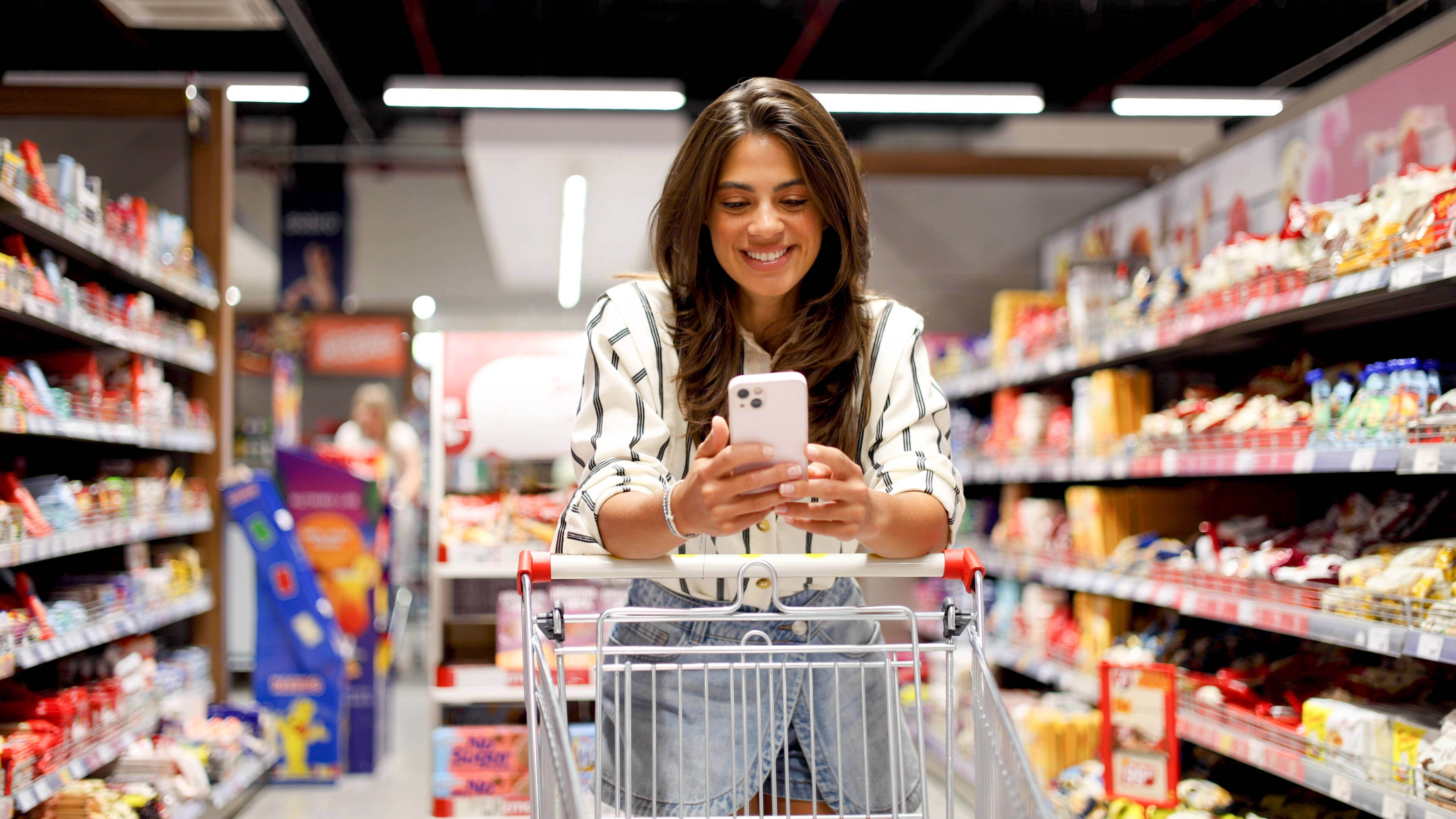Gamification loyalty programs are redefining how brands build customer relationships. Instead of just giving points or discounts, these programs add engaging parts like challenges, goals, and badges that keep customers interested and give them a feeling of accomplishment.
As digital attention spans shrink and competition intensifies, loyalty programs need to do more than reward transactions. According to Research and Markets, the global gamification market is projected to grow by over 26% annually, reflecting the rising demand for more immersive, experience-driven strategies.
To meet this shift, brands are embedding game mechanics across mobile, online, and in-store channels. Loyalty programs can help professionals and marketing teams create a consistent, personalized experiences that keep customers coming back. In this blog post, we will talk about how gamification works in loyalty programs, what makes them effective, and the exact methods that big brands use to keep people interested in a long time.
What is gamification in loyalty programs?
Gamification in loyalty programs is the use of game-like features—such as levels, challenges, points, and badges—to improve customer engagement and encourage customers to interact repeatedly. Instead of just giving out fixed rewards, brands create dynamic experiences that tap into customers' natural motivators, like achievement, progress, and recognition.
For example, a customer might earn points not only for making purchases, but also for trying new products, completing a set of actions, or referring friends. These elements provide a sense of participation and progression, making the loyalty journey more memorable and emotionally resonant.
Academic research confirms that well-structured gamification in loyalty programs can significantly boost customer satisfaction, engagement, and repeat behavior. This is has a big effect in competitive industries like retail and grocery, where maintaining loyalty needs more than just transactional benefits, it also needs experiences that feel rewarding, personalized, and ongoing.
How to design an effective gamified loyalty program
Designing an effective gamified loyalty program starts by aligning your mechanics with your business goals. Want to drive repeat visits? Structure rewards around purchase frequency or consecutive interactions. Aiming to increase average order value? Set spending thresholds that unlock higher tiers or special challenges.
Next, personalization is key. For instance, McKinsey reports that brands using truly personalized offers can see revenue lifts of 10–25%, depending on program maturity. Using customer data enables you to tailor missions—whether prompting a shopper to explore a new category or rewarding based on past behavior—making loyalty feel thoughtfully curated.
Last, simplicity and consistency matter. It's important that even shifting features such as leaderboards and tiered ranks, should be easy for users to understand. To keep people interested, you need a consistent experience across mobile, online, and in-store channels, something we've discussed more about this in this blog.
By balancing goal-driven structure, meaningful personalization, and seamless design, your gamified loyalty program can foster deeper relationships and drive sustainable retention.
Proven game mechanics that drive real customer loyalty
There isn't a magic recipe that works for all businesses, but there are some game concepts that work well in all of them. Here are the most important parts, especially those that are backed by NeoDay:
Point-based tiers & tier recalculation
Point‑based loyalty programs trace back to airline miles from the 1980s—such as Frequent Flyer programs—where customers earned rewards based on the miles they flew. Over time, these systems evolved into tiered structures—Silver, Gold, Platinum—unlocking increasingly valuable perks. To maintain engagement, many programs add expiry rules or periodic tier recalculations, making customers to stay active year-round.
Some programs also incorporate periodic recalculation or expiry rules to keep customers actively engaged. Many loyalty platforms offer configurable tier-based structures, allowing marketers to easily reward both customer involvement and long-term loyalty through tailored campaign reasoning.
Spending-based tiers
Spending‑based tiers reward customers based solely on their monetary value, making this approach especially effective for luxury and premium brands that want to deliver exclusivity and personalized experiences. Customers who reach specific spending thresholds unlock enhanced perks—such as VIP access, private consultations, or early product releases—creating a clear and compelling incentive: spend more to receive more.
More and more, luxury and high-end brands are using this model to get big spenders to feel more emotionally attached to them. Research have found that brands that focus on rewarding valuable customers with better service and personalized perks not only get more term value, but also keep customers loyal to the brand even when the market is unsure.
Challenges
Challenges introduce time-bound goals that encourage users to do specific actions, such as “Buy three times this month” or “Try two new products.” Borrowed from the structure of video game quests, these mechanics add intention and excitement to everyday shopping behavior. Through setting clear, achievable goals for customers, challenges give them a sense of purpose and progress that encourages them to keep playing. Research shows that goal-setting and real-time feedback—two core aspects of challenge-based design—significantly increase motivation and behavioral consistency in loyalty programs.
These mechanics are often integrated into larger campaign strategies, such as seasonal events or weekly visit streaks, to keep customers come back over time. Loyalty platforms may feature recurring tasks, such as scratch-to-win experiences or multi-step missions, that refresh every week and offer bonus points or exclusive perks. These approaches can turn routine interactions into motivating moments that build habit and increase loyalty without overwhelming the customer journey.
Milestones
Milestones mark important touchpoints in a customer’s loyalty journey, such as their 10th purchase, 1st referral, or a 6-month anniversary. These accomplishments generate memorable moments that acknowledge client loyalty and strengthen their emotional connection to the company.
When structured progressively—like at the 1st, 5th, 10th, and 20th interaction—multiple milestones form a long-term engagement path. This layered approach motivates customers to keep moving forward, encouraging more frequent interactions and higher lifetime value. Research shows that multiple-level milestone tactics can greatly improve customer engagement and spending behavior by making them feel like they are making progress and exclusivity.
Referral milestones, on the other hand, focus on recognizing customers for advocating the brand. Rather than offering a one-time reward for a single referral, brands can increase engagement by introducing milestones at referral counts like 3, 5, or 10. This method not only encourages people to keep sharing but also gives them a sense of achievement as customers see real benefits from spreading the word.
By boosting rewards across referral milestones, such as increasing discounts, exclusive access, or loyalty status, brands can turn their most loyal customers into long-term advocates who fuel organic growth.
Spin-to-win & scratch-to-win
Instant-win mechanics like spin wheels and scratch cards produce quick rewards, which has been shown to dramatically boost engagement. A rapid study about digital scratch cards showed that this form of gamification positively influences both hedonic (enjoyment-driven) and utilitarian (practical) motivation in mobile users, leading to higher brand loyalty.
These mechanics are especially effective for short-term activations, such as seasonal campaigns, product launches, or onboarding flows. Digital spin-to-win games provide a mobile-friendly, swipe-to-play interaction that is both simple and exciting. For example, platforms including NeoDay have included improved spin mechanics like the “Wheel of Fortune 2.0,” which adds a tactile swipe experience similar to scratching a digital card, amplifying the thrill without overwhelming users.
By integrating instant-win games—whether via a spin wheel or scratch card—in your loyalty journey, you can inject surprise and delight at scale. These bite-sized, fun experiences capture customer interest and encourage repeat engagement in ways few other mechanics can.
Leaderboards & rankings
Leaderboards introduce a strong sense of social comparison—an age-old motivational trigger—by displaying customer rankings in real time. Originally used in arcade games and fitness apps, this mechanic now helps brands promote friendly competition. Research shows that leaderboards encourage users to compare themselves to others, which can improve engagement and motivation when the comparison feels attainable and relatable.
By ranking shoppers based on points earned, challenges completed, or referrals made, leaderboards provide customers a specific goal to achieve for. This is especially effective for community-focused brands where visibility and recognition amplify motivation. When used carefully, like by setting up tiers or sending personalized messages, leaderboards can increase involvement and social proof, thanking customers not only for buying but also for taking part and doing well.
Badges
Badges function as visual markers of a customer’s progress, achievements, or behaviors, ranging from “First Purchase” to “Challenge Master.” they started out from physical recognition systems like scouting, they became popular digitally through platforms like Foursquare. In loyalty programs, badges appeal into users' desire for acknowledgment, offering a sense of accomplishment that encourages continued engagement.
Research shows that badges can dramatically influence user behavior by providing social status and motivation through visible achievement. When tied to limited-time events or exclusive challenges, they become not only collectible but shareable, strengthening social proof and brand awareness. Well-thought-out badges can turn everyday actions into proud achievements that make people more loyal and encourage them to connect with you again.
Quizzes
Quizzes blend interactive learning and gamification, creating a dual-purpose tool that educates customers while gathering valuable preference data. These quizzes are not just entertaining; they produce real engagement. A study on digital interactivity found that interactive content—like quizzes—significantly improves customer engagement by prompting users to respond, think, and stay longer with the content.
Brands like Sephora uses quizzes to give personalized skincare and makeup recommendations, rewarding participation with discount codes or loyalty points. This turns passive browsing into an active experience where customers feel heard and invested. Brands can connect more deeply with users and turn their interest into a valuable conversion by making quizzes that are related to their customers' hobbies and giving them small, important rewards.
Punchcards
Digital punchcards are a modern evolution of the classic “Buy 10, get 1 free” model—simple, intuitive, and highly effective for encouraging repeat visits. By providing clear, visual progress toward a reward, they leverage the goal-gradient effect, which shows that people are more motivated as they get closer to completing a goal. Because of this, punchcards work best in high-frequency settings where ongoing participation is important.
Beyond their simplicity, digital punchcards also open the door to more secure and scalable implementations. A study on fast, privacy-preserving punch cards outlines how brands can track and redeem rewards without compromising customer data. This is called "balancing functionality with trust." When carefully thought out, punchcards can be used as short-term rewards that lead to long-term habits. This makes them an important part of many great loyalty programs.
Each of these mechanics can be layered strategically to create a balanced, exciting, and rewarding loyalty program. They can lead to important behavior and long-term brand loyalty if they have the right tools to power them.
What’s next for gamification
Throughout this blog, we've discussed how gamification loyalty programs are changing the way brands build meaningful, lasting customer relationships. From point-based tiers and milestones to quizzes and punchcards, these interactive elements don’t merely incentivize—they engage customers at an emotional level, transforming routine transactions into memorable experiences.
Looking ahead, gamification will become more specialized and intuitive in the future. As AI and real-time analytics get better, brands will be able to offer smarter challenges, more personalized rewards, and a seamless experience across all channels. This change will allow brands to predict what customers want and give it to them right away, which will make relationships and trust even stronger.
If you found this guide valuable, share it with your team, and don't forget to explore our other blogs for more insights on customer loyalty, marketing trends, and gamification strategies that truly engage.
You May Also Like
These Related Stories

How Dia transformed customer engagement with NeoDay
In today’s competitive retail landscape, maintaining customer loyalty and engagement is more challenging than ever. Recognizing this, Dia Espana, a le …
%20(1).png)
Why gamification marketing is your next competitive edge
Learn how gamification marketing drives engagement, conversions, and loyalty through interactive brand experiences with real examples and get practica …

Championing customer loyalty with NeoDay
In today’s fiercely competitive retail environment, customer loyalty is no longer a luxury, it’s a necessity. Businesses need to go beyond simple poin …
